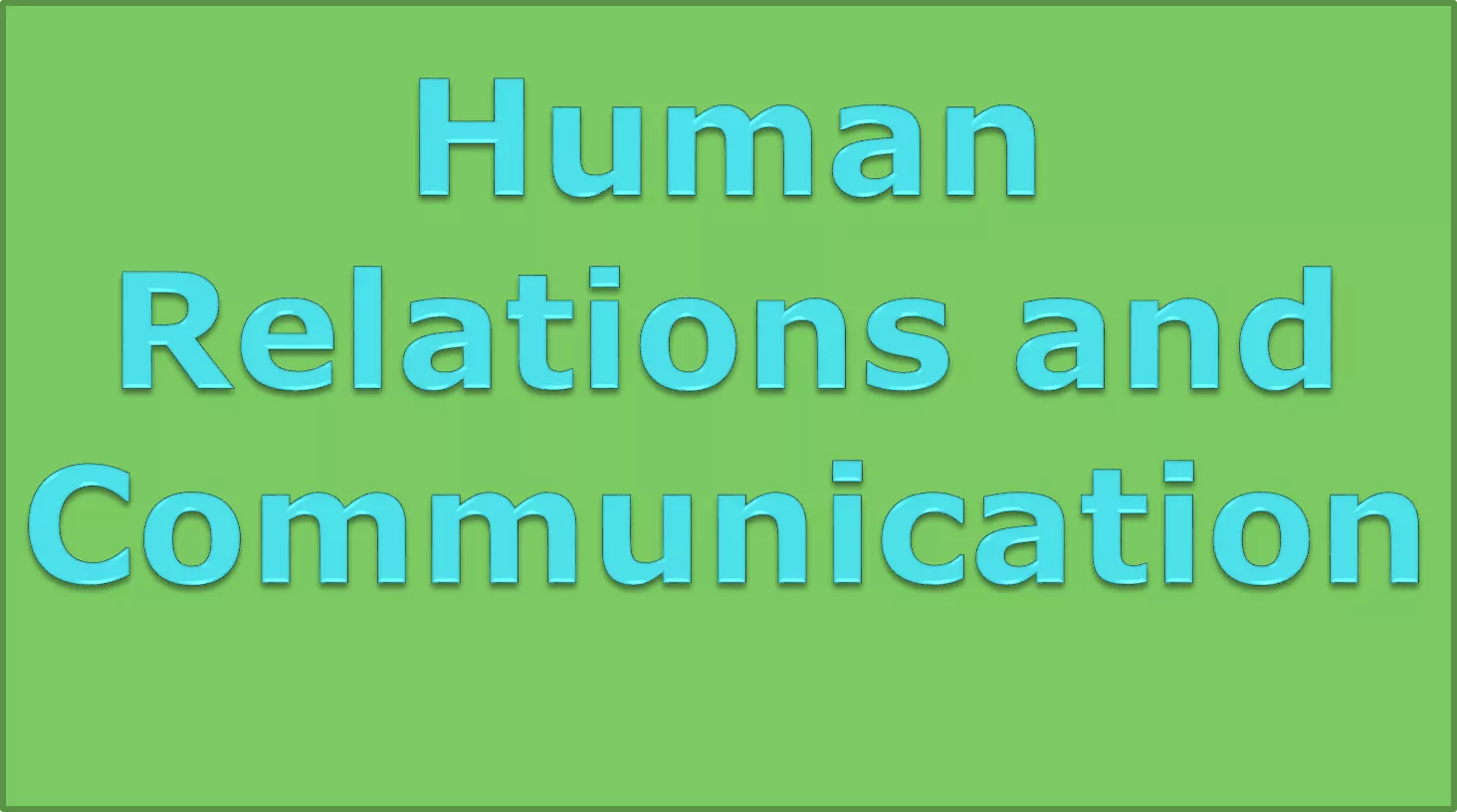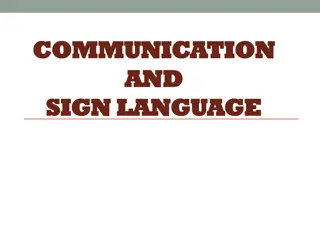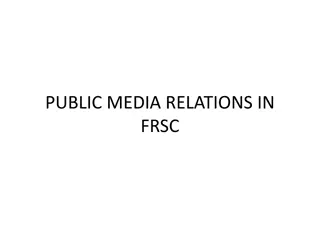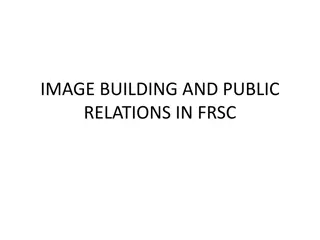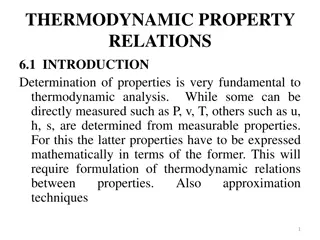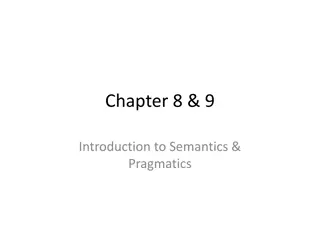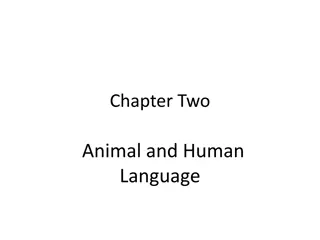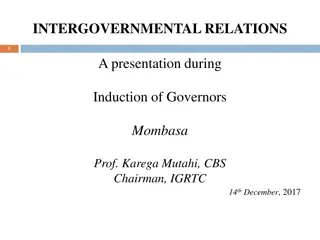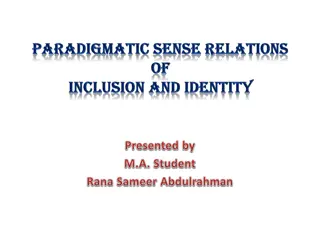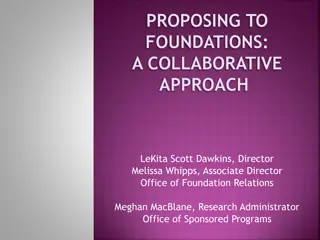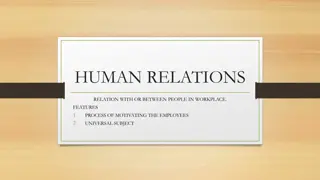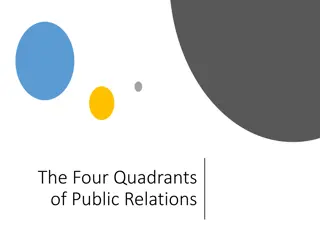Human Relations and Communication
Human relations pertain to relationships among individuals, whether formal or informal, emotional or unemotional. Effective communication involves conveying thoughts and understanding others. It includes verbal and nonverbal aspects, with nonverbal communication playing a significant role in message interpretation. Recognizing the importance of both verbal and nonverbal cues is crucial for successful interpersonal interactions.
Download Presentation

Please find below an Image/Link to download the presentation.
The content on the website is provided AS IS for your information and personal use only. It may not be sold, licensed, or shared on other websites without obtaining consent from the author.If you encounter any issues during the download, it is possible that the publisher has removed the file from their server.
You are allowed to download the files provided on this website for personal or commercial use, subject to the condition that they are used lawfully. All files are the property of their respective owners.
The content on the website is provided AS IS for your information and personal use only. It may not be sold, licensed, or shared on other websites without obtaining consent from the author.
E N D
Presentation Transcript
Human Relations The term Human Relations refers to relationships between people. The relationship can be formal or informal, close or distant, emotional or unemotional.
The Basics of Communicating with others Interpersonal communication skills are the tools we use to let others know what we think, feel, need, and want. And they are how we let others know that we understand what they think, feel, need, and want.
What is communication? Communication is the activity of conveying information, thoughts, and ideas. Communication requires: a sender a message intended recipient / receiver
Includes both the spoken and written word The communication process is complete once the receiver has understood the sender.
Verbal Communication Exchange of information using words. Includes both the spoken or written word.
Nonverbal communication: Sending and receiving wordless messages Expresses more of the meaning of a message than verbal communication Understanding the message 1. 7% by spoken word 2. 38% by the tone of the voice 3. 55% by body language
Types of nonverbal communication
Humans pride themselves on their seemingly unique ability to verbalize feelings and ideas. While the mouth tells one story, gestures and posture may tell a different story.
Gestures 1. Express variety of feelings Contempt Hostility Approval Affection 2. Can be used in addition to words 3. Differ by culture Gestures should be observed in clusters to provide a more accurate picture of person being observed Each gesture is like a sentence The sum total of postures and gestures relate a non-verbal story
Behavioral scientists have found that some basic communication gestures are universal and believed to be inherent Examples are: smiling, shrugging, nodding Children tend to exaggerate these gestures making their body language easy to read
Body Language and Posture 1. Unconscious barrier between you and the receiver crossing arms 2. Sign of disbelief - scratching the chin 3. Good health and positive attitude shown by erect posture 4. Fatigue -slumped posture 5. Angry - clenched fist 6. Anxiety - clearing the throat 7. Assertiveness - pointing finger
8. Boredom - leaning on one's elbow with the chin in the hand 9. Boredom - wiggling a foot 10. Concealing something - no eye contact 11. Defiant - hands on hips 12. Dominance - sitting backwards on a chair 13. Doubtful - touching ear 14. Everything under control - thumbs in belt or pants
15. Expectation - rubbing palms 16. Feeling superior - hands behind one's back 17. Guilt - lowering the eyes 18. Honesty - open palms occasionally touching the chest 19. Impatience - tapping or drumming fingers 20. Insecurity - biting fingernails 21. Interest in someone or something - tilted head 22. Lack of confidence - failing to look someone in the eyes
23. Lying - touches face 24. Making a decision - stroking chin 25. Needing reassurance - hand to throat 26. Nervous - fiddling with items 27. Readiness - standing with hands on hips 28. Rejecting what is being said - rubbing nose 29. Unconcerned - leg swung over chair 30. Unwilling - arms crossed tightly across chest
Facial Expressions 1. Most expressive part of the body 2. Seven universally accepted emotions shown fear anger surprise contempt disgust happiness sadness
Eye Contact 1. Often initiates communication 2. Good contact means respect, a willingness to listen, and to keep communication open 3. Looking away means anxiety, defenselessness, or avoidance of communication 4. Cultural Differences a. view eye contact as an invasion of privacy b. eye contact considered disrespectful
Object communication such as clothing, hairstyles, graphics, and symbols Healthy people with good self-esteem pay attention to dress and grooming People feeling ill show much less interest in appearance and dress
Touch Multiple meanings positive message: affirmation, reassurance, share warmth, approval and emotional support negative message: anger, frustration, punishment, invasion of personal space
Nonverbal Communication Activity Survey of Nonverbal Impressions Photographs
Elements of effective communication The message must be clear 1. Use terms that the receiver can understand 2. Know the developmental level of the other person and use language appropriate to that level.
3. Deliver the message in a clear and concise manner Good grammar and correct pronunciation are essential Avoid slang terms, words with double meanings, or meaningless phrases such as you know , or all that stuff The tone and pitch of voice are important Do not speak too fast or too slowly Written communication - the message should be spelled correctly, contain correct grammar, proper punctuation, and it should be concise.
4. The receiver must be able to hear and receive the message People may be heavily medicated, have a hearing or vision loss, or speak a different language Use alternate ways to communicate such as writing the message out, using an interpreter, or repeating the message
5. The receiver must be able to understand the message Use terms the person understands The person s attitudes and prejudices may interfere with understanding Your own attitudes and prejudices may interfere with understanding
6. Interruptions or distractions must be avoided Trying to talk while answering the phone or writing a message will decrease the effectiveness of communication Environmental factors may affect communication, (e.g. uncomfortable temperatures or loud noises such as a loud TV or radio may interfere with communication)
1. Control the tone of your voice: convey interest instead of boredom, patience rather than anger 2. Be knowledgeable about the topic of conversation: be honest and confident 3. Be flexible: you may want to discuss a certain subject and the other person wants to discuss something else 4. Be clear and concise: stay on one subject at a time 5. Avoid words that might have different interpretations 6. Be truthful 7. Keep an open mind: others have valuable contributions 8. Take advantage of available opportunities
Therapeutic communication skills Listening Silence Offering Self Reflection Encouraging elaboration General leading statements Giving information Open ended questions
Listening Active listening is a foundation communication skill. It is a primary assumption that the listener is trying to understand the speaker s point of view or experience.
Key Tips for Active Listening The following tips, though not always possible in a given moment or place, will aid our effort to hear and understand what the speaker is saying.
Choose to listen Be alert and relaxed and take sufficient time Maintain eye contact Indicate that you are paying attention to what the other person is saying Find a good space Respond vs React Hear as well as listen Be patient Learn Be kind Follow their lead Listen for content and emotion Ask questions
Silence Take the time to wait for the person to initiate or to continue speaking Allow the person time to reflect on what has been said and to collect thoughts
Offering Self: Can I help in some way? Shows caring and concern Shows readiness to help
Reflection: repeating what the person has said Validating the meaning of what was communicated. Encourages further verbalization
Encouraging Elaboration: Tell me how that felt. Used to elicit information about a subject Helps the person clarify unclear thoughts or ideas
General Leading Statements: Go on. I see. Used to get interaction started Encourages the other person to continue or elaborate
Giving Information Informs the person of specific, relevant information Requires feedback to make sure the other person receives the correct information
Open Ended Questions: Tell me about your day, rather than, How was your day? Encourages elaboration rather than a 1 or 2 word answer Creates an inviting atmosphere for sharing thoughts, and feelings
Non Therapeutic Communication skills Don t use cliches offers false reassurance Don t use questions beginning with why or how- puts the other person on the defensive Don t keep changing the subject indication of not caring and ignoring the other person Don t use judgemental comments belittles what the other person is feeling
Communication Barriers Anything that gets in the way of clear communication. Common Barriers: Prejudices Gender bias Attitudes Personality Stereotypes Cultural diversity Physical Barriers
Subliminal Correspondence Dear Dad, $chool i$ really great. I am making lot$ of friend$ and $tudying very hard. With all my $tuff, I $imply can t think of anything I need, $o if you would like, you can ju$t $end me a card, a$ I would love to hear from you. Love, Your $on --------------------------------------------------------------------- Dear Son, I kNOw that astroNOmy, and ecoNOmics, and oceaNOgraphy are eNOugh to keep even an hoNOr student busy. Do NOt forget that the pursuit of kNOwledge is a NOble task, and you can never study eNOugh. Love, Dad
Mobile Manners: Cell Phone Etiquette
Etiquette A set of rules we all agree to follow in order to be considerate toward others It is a question of awareness of how your actions affect others. Simple guidelines of common courtesy Contribute to a more polite society Just a matter of being considerate of others
The Simple Rules of Etiquette Modulate your voice. Use your inside voice : a quiet conversational tone. There is no need to shout into or at a phone. Cell phones have sensitive microphones that can pick up a very soft voice while blocking out ambient noise.
10-foot Proximity Rule Maintain a distance of at least 10 feet from the nearest person when taking on a cell phone. Don t force others to overhear your personal business. Bystanders can hear the steady streams of shocking and confidential revelations that are blurted out by cell phone users. Private issues should be kept private. Forcing others to hear your phone conversations is an intrusion on their thoughts. Imposes, infringes, intrudes Keep your conversation private.
Love the One Youre With Avoid taking calls when you re already engaged in a face-to-face conversation. Gives the impression that you do not value the person in front of you It is inconsiderate to take a call in the middle of a conversation. Never take a personal call during a business meeting. This includes interviews and meetings with coworkers or subordinates





